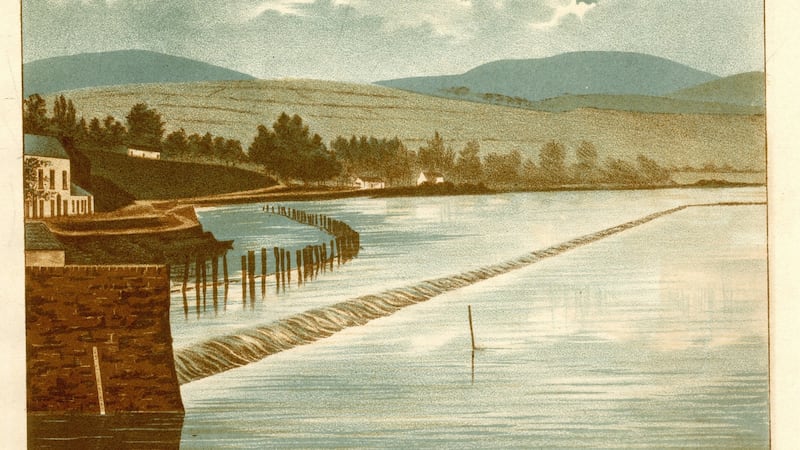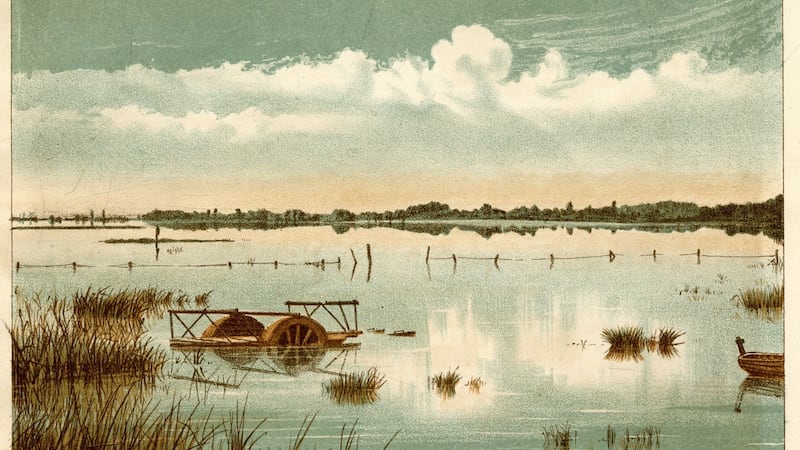A collection of rare Victorian images of flooding on the Shannon has come to light and will be sold at auction in Dublin next week.
The set of prints was published in 1880 in a book by Henry Trench – a landowner who was exasperated that remedial works done on the river during previous decades had failed to prevent regular flooding of "valuable hay and meadow land".
The beautifully painted images depict submerged farmland, farmers on boats, floating haycocks and a faulty weir at Killaloe, Co Clare.


Belfast publishers Marcus Ward & Co commissioned an unknown artist to make watercolour images of the flooding.
These were reproduced as lithographic views (prints) in the book, which will go under the hammer in a sale of rare books by Fonsie Mealy Auctioneers in Dublin on Tuesday. The auctioneers said the "extremely rare" Shannon Floods had a top estimate of €750.
The whereabouts of the original watercolours is unknown.
Trench, who lived at Cangort Park, Roscrea, Co Tipperary, owned 4,707 acres in Co Tipperary, 2,113 acres in Co Offaly, 1,926 acres in Co Limerick, 1,581 acres in Co Galway, 704 acres in Co Clare and 432 acres in Co Roscommon. Large stretches of his land bordered the Shannon.
Badly constructed
He blamed some of the flooding on a weir at Killaloe “erected in 1845” which, he said, was badly constructed and “throws back water for 25 miles”.
He claimed the weir’s “height exceeds that authorised by Act of Parliament”; that it “has no sluices”; and had “insufficient waterway” for the access and escape of water.
Trench said: "The complaint is not that this weir mound was erected, but that it was the only part of the work that was done, and that those parts were left undone that were intended to remedy the obstruction which it caused."
In an echo of comments heard this week from Ministers regarding delays to flood relief works due to planning objections, Trench noted that some of the remedial works and drainage schemes on the Shannon implemented by the authorities during the 1830s and 1840s had not been carried out properly because of “indifference and objections”.
Trench was one of many Irish landowners who lobbied the [British] government on the subject during the 19th century. Flooding on the Shannon was the subject of frequent debates in the House of Commons and House of Lords in London and various remedial works and drainage schemes were funded.
Cultivation precarious
In 1868 a report by a House of Commons “select committee on drainage and navigation of river Shannon” stated that “the lands along the banks of the Shannon for a distance of 150 miles have been exposed to floods, which render cultivation precarious, impede industry, and by the saturation of many thousands of acres affect the climate of the district through which it flows”.
The MPs noted that “for many years continual remonstrances had been made to successive governments to induce them to take into consideration this state of things, and to provide a remedy”.
However, the select committee concluded that some of the money spent on the remedial works and drainage schemes had been misappropriated, and that the board of works had altered some of the plans without seeking authorisation.














